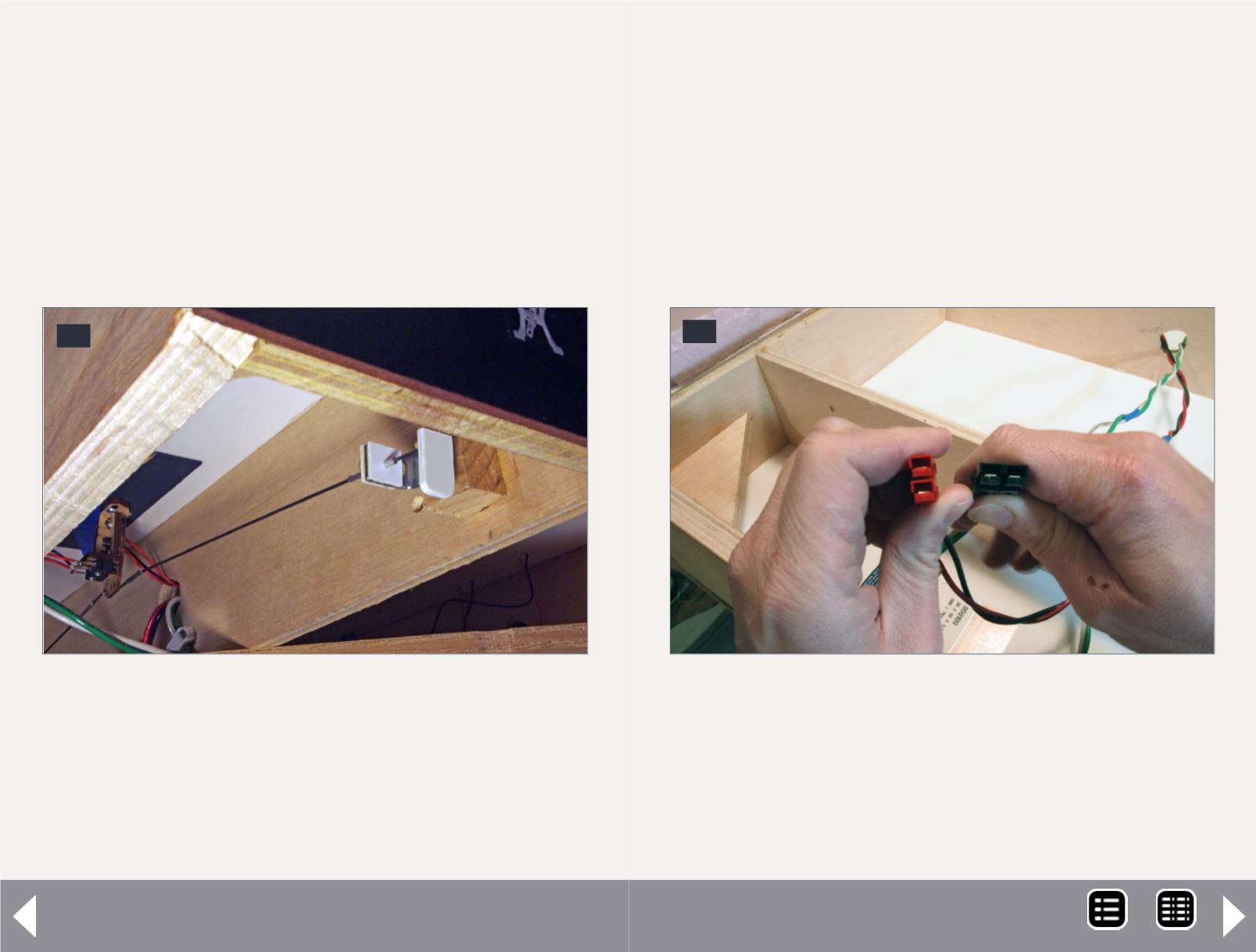
Shoofly free-moN module - 9
“front,” so I installed a Fast Tracks Bullfrog underneath, using
a piece of 0.080” styrene caulked to the foam to create a firm
base plate for the Bullfrog. I didn’t want turnout control rods
and knobs to extend beyond the fascia, so I used stiff music
wire for rods, attached a thick styrene pad at the ends, and
then secured the rods a few inches before the fascia with a
metal corner brace jerry-rigged with an aluminum tube. (11)
A printed symbol of a harp switch stand is secured to the outer
fascia to indicate where one may slip some fingers underneath
to push or pull on the styrene pad to throw the turnout points.
11
11: I prefer manual turnout control, so I assembled
and installed a Fast Tracks Bullfrog with homemade
control rods made out of music wire. Given the 50”
layout height and the 24”-or-less module width, the
control rods are actually unnecessary as we’ve found
it’s easier to just reach underneath from either side
and throw the Bullfrog itself.
The Voice of Experience says that control rods are not even nec-
essary and just get in the way: given the normal 12”-24” module
widths, operators are able to easily reach under modules from
either side to throw the Bullfrog itself, especially with a short
piece of dowel or paintbrush handle attached to the mechanism.
While the turnout was intended for work trains and delivery of
bridge-building supplies (metal girders, rock fill, rebar, retaining
wall wood, etc.), we’ve had some surprising visitors on the sid-
ing, including Budd RDC cars and wayward freight cuts desper-
ate for refuge from highballing through trains.
12
12: Free-moN modules use Anderson Power Pole
connectors for both the track power bus (red) and the
accessory bus (black). For the track power bus, the
“Left Over” rule — looking from the end plate, the bus
wire with feeders to the left rail goes over the right —
ensures proper polarity no matter which direction the
module faces.
MRH-Nov 2013


